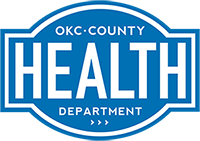Bioterrorism
Bioterrorism is defined as the deliberate use of biological agents – bacteria, viruses and toxins – to cause diseases in people, livestock, and crops. Some commonly recognized examples include anthrax and plague bacteria, smallpox and Ebola viruses, and botulism and ricin toxins.
While only a small number of the hundreds of bacteria and viruses that exist naturally are viable as terrorist weapons, those that can be “weaponized” cause great harm in small amounts. If effectively dispersed in the air, the extremely small size of some biological agents means they can remain airborne for hours. Once inhaled, their size enables them to easily enter the lungs and then into the bloodstream. After that, it can take days or weeks before the effects of biological agents become obvious. Other biological agents are more likely to be introduced on surfaces that are then touched, or on food that is then eaten.
Biological agents are not easily detected and may take time to grow and cause a disease; therefore it can be difficult to know when an attack has occurred. The delayed onset of symptoms also creates the potential for person-to-person disease transmission before those symptoms are linked to their cause. This secondary transmission threat is greater with some agents – smallpox and plague, for instance – than it is with others such as anthrax and botulism, which generally are not transmitted from person to person.
Because each biological agent is different, the nature and scope of a public health response to a terrorist-launched disease outbreak will be dictated by the specific biological agent used and the extent the disease has spread before being detected. Some situations might require mass dispensing of antibiotics or mass immunizations. Other situations might call for the isolation of infected individuals for care and treatment or the quarantining of exposed individuals for observation. Still others may best be responded to through use of shelter-in-place or evacuation strategies.
In the event of a bio-terrorist attack, local, state and federal public health resources would be available and involved in our response.
PREPARING FOR A PUBLIC HEALTH EMERGENCY
If the health department needs to provide medication or vaccination to the entire population (or to an exposed segment of the population), then they will set up a mass clinic. The affected public will be asked to report to the clinic to receive medication in an organized way, such as alphabetically by last name or according to voting district. Once at the clinic, individuals must complete health history forms, which will be used to determine whether they are eligible for the medications and to track medications dispensed. You can save yourself time by filling out the form and keeping it with your emergency kit. Bring the form with you to the clinic to bypass part of the registration process.
These forms are called NAPH (Name, Address, Phone Number and Health History) forms.
Click the links below to download:


